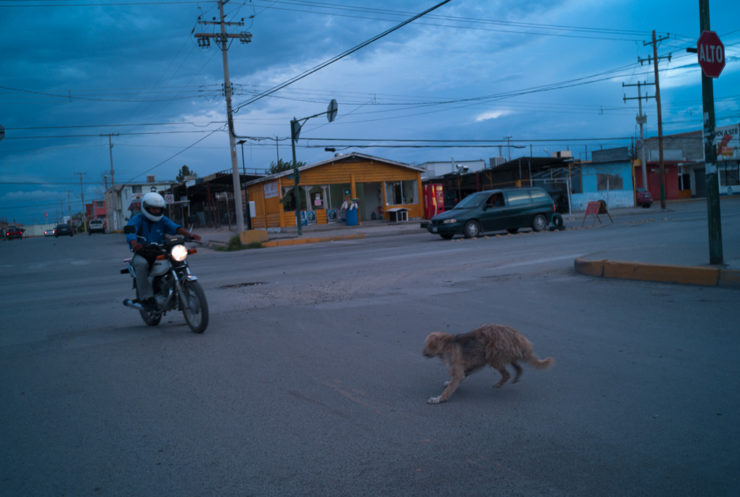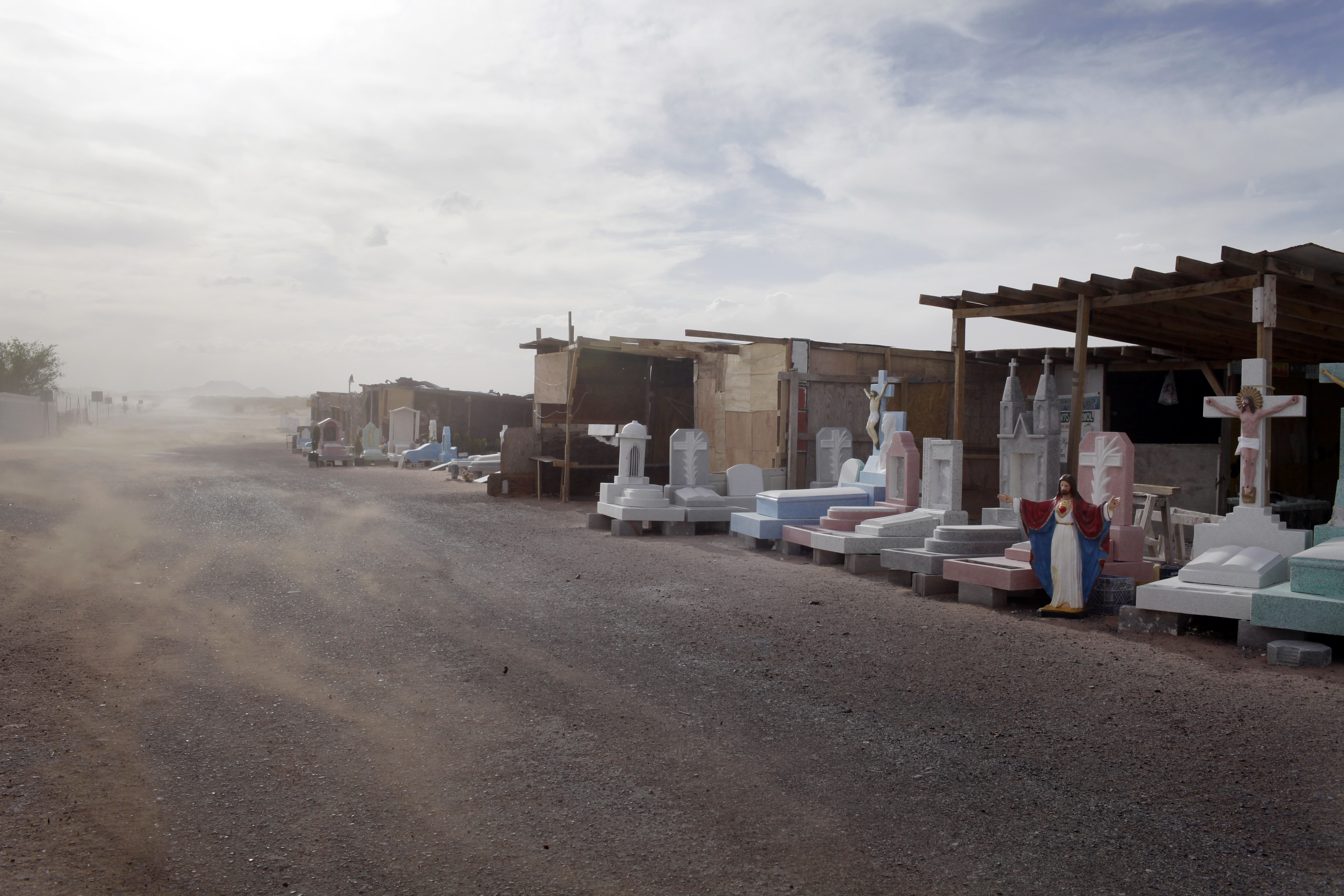
A stray dog dodges traffic in Juarez, Mexico, in August 2013. In 2010-2011, the stray population of Juarez swelled almost ten-fold, as the drug war and recession tore apart the social fabric that suported them.
Numbers can tell a story, but they can also be relentlessly abstract.
That was certainly the case for Ciudád Juárez, which over the course of four years faced a relentless wave of cartel violence. From 2008 to 2011, the Mexican border city offered a continuous, morbid count.
It is a piece that I have returned to repeatedly over the years, haunted by its picture of a city so consumed by violence that the everyday human-animal ecosystem is thrown out of whack.
4: The number of people killed by armed men on a bus filled with assembly plant workers.
15: The teenagers — with no known drug ties — who were murdered by cartel assassins at a party.
2: The grieving mother who sought justice for a daughter who had been killed – – and was herself shot to death by masked men at a government hall.
There were other numbers, too — ones that could overwhelm to the point of numbness: 10,000 dead, 100,000 homes abandoned, 2,000 businesses closed or burned down.
These figures were often greeted with equal parts horror and resignation, then quickly forgotten as the next atrocity took over the day’s headlines.
Now imagine the story of Juárez told through its dogs.
In 2013, Texas-based journalist Michelle Garcia, in collaboration with Mexican investigative reporter Ignacio Alvarado Alvarez, wrote such a story for Al Jazeera America. (The pair reported the article together; she wrote it.)
It began:
“In better times — and there were better times in Ciudad Juárez — even the mangiest street dog could count on kindness for its survival. Unwashed and unkempt, the streets were his home, the neighborhood his master. Scraps, the stray bone, a bowl of water — he got by.”
“Imagine, then, the upheaval that upended this imperfect but functioning system when a manageable 20,000 street dogs morphed into a teeming population of 200,000 mutts, German Shepherds, Labs, and the favored dog of city dwellers for years — the Poodle.
“The bond between man and his best friend was corrupted. One man nailed a dog to his fence. A gang of 10 children lassoed a cat, hurling it up onto the street cables high above, leaving it to dangle there.
“On the surface, this breakdown in the relationship between man and beast could be attributed to the brutal violence that tore at the social fabric in Ciudad Juárez between 2008 and 2011.”
Countless stories have been written about the period of extreme violence in Juárez. Few, in my mind, have been as indelible as “Mexico’s city of dogs.”
It is a piece that I have returned to repeatedly over the years, haunted by its picture of a city so consumed by violence that the everyday human-animal ecosystem is thrown out of whack, a story that evokes, in stark, terms, what it means for the social order to fall apart: People flee, or are killed, and a city is left feral.
“Houses emptied out seemingly overnight; entire blocks lay quiet. Meanwhile, every six months, the dogs produced a new brood, a new gang.”
The article was written well after Juárez had emerged from the worst of the violence. And it tracks the ways in which the city’s dogs served as poignant reminders of what had been.

Tombstones for sale in Ciudad Juarez, Mexico, in 2009.
Dogs had been protectors and loyal friends. They had “symbolized home and humanity” in dreary subdivisions with fanciful names such as New Juárez or Riberas del Bravo, where families survived on $10 a day and lived in cookie-cutter homes so small, not even a sofa would fit in the living room.
“During the worst moments of the violence, when the desert was littered with dead and mutilated human bodies, parts of New Juárez and Riberas del Bravo were all but lost to the dogs.”
And even after the murder rate had abated, there they remained: loose, hungry, miserable, carrying the memory of everything the city had been through, witnesses to an unspeakable history.
“Only the mutts knew for sure what happened. They were often the first to arrive at the crime scene — slinking around the blood, slipping behind police tape. They watched from sidewalks as the caravans carrying armed men rumbled past. Rottweilers and poodles alike were found standing guard outside the carcasses of torched homes, defending the remains.”
Part of what has long intrigued me about this article is the way in which Garcia and Alvarado tell a story that is about one thing (dogs) while simultaneously telling us a story about another (violence in Juárez). It recalls the intricate writings of essayist Bruce Chatwin, who once chose to describe the immigrant legacy of Buenos Aires by writing about the phone book. (“The history of Buenos Aires is written in the telephone directory,” he wrote in his famous South American travelogue, “In Patagonia “Pompey Romanov, Emilio Rommel, Crespina D. Z. de Rose, Ladislao Radziwil, and Elizabeta Marta Callman de Rothschild — five names taken at random from among the R’s — told a story of exile, desolation, disillusion, and anxiety behind lace curtains.”)
It’s a storytelling device that takes information we’ve all heard and presents it in a surprising way, a tepid old news item transformed into a bracing bucket of ice water.
In Garcia’s story, a dog isn’t simply a dog. It is a creature that a desperate family abandons in haste, a family plagued by poverty or visited by death. A family faced with terrible decisions in a fraught time. A family, perhaps, like yours or mine.


